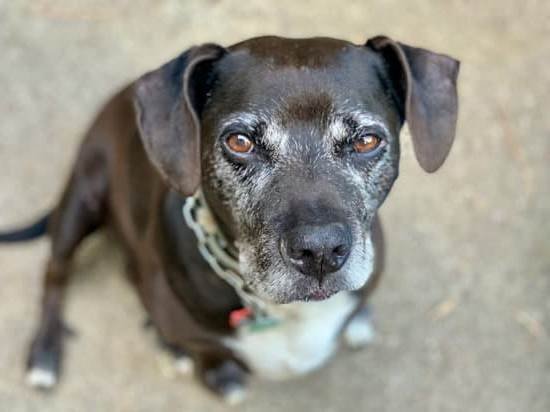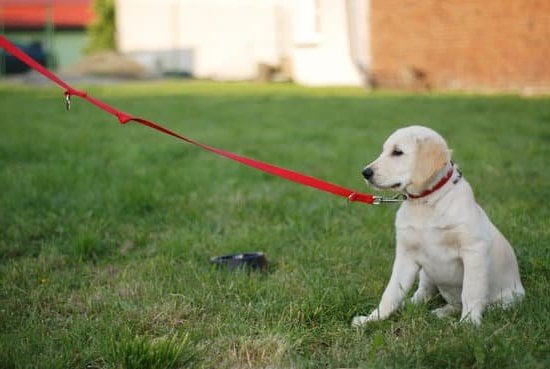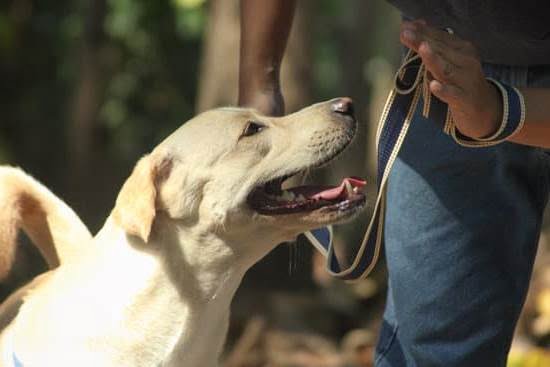Incorporate Training into Your Home
1. Have a designated training spot: Choose a place like a living room corner or an area of the yard that you can use for consistent training sessions twice a day. Having a clear boundary will help your dog understand when it is time to focus and learn new behaviors.
2. Use positive reinforcement: Offer praise, treats, or toys as rewards when they do something you want them to do. This reinforces the idea that the behavior you are teaching them is desirable and something they should continue to do in order to receive more reward.
3. Stay consistent: Training takes time and consistency is key so don’t give up if your dog isn’t responding right away! Stick with the same commands, be patient and make sure everyone in your household is on the same page with how you’re training your pup – this ensures they are not getting different instructions from different people in different places which can be confusing for them.
4. Start small and keep it simple: Pick one or two basic commands (Sit, Down, Come) and focus your energy on those rather than confusing your pup with multiple behaviors at once – pick one each session until it becomes second nature for them!
5. Set realistic expectations: Dogs need time to process and understand what behavior you are trying to teach them – don’t expect miracles overnight! Give them time to learn each step before teaching the next one, give lots of reinforcements when they get it right, but also know when it’s okay for them not to perform or listen every single time especially during stressful or chaotic times (like during fireworks).
Understanding the Role of Exercise
Exercise is an important factor in keeping your dog healthy, both mentally and physically. Regular exercise allows your pup to burn off excess energy so they are calmer and less prone to destructive behaviors. It can also help keep your pet physically fit by improving cardiovascular endurance and decreasing certain health risks such as obesity. Additionally, exercise stimulates brain activity and serves as a form of mental stimulation for your furry companion. Exercise can even aid in helping reduce separation anxiety when left alone for extended periods of time, as the physical and mental enrichment it provides helps tire them out both mentally and physically. These experiences can further help build trust between you and your pup, enabling successful training sessions moving forward.
Common Mistakes to Avoid
1. Lack of consistency: One common mistake dog owners make when training their dogs is a lack of consistency. Establishing a consistent routine and using the same commands, rewards, and punishments will help the dog learn more quickly by knowing what is expected and how to behave correctly.
2. Using physical punishment: Some people might use physical punishment to train their dog, but this almost never works in the long-term. Not only can it be physically damaging to your pet, but it can also cause mental anguish by harming the bond between you and your dog. Instead, use positive reinforcement such as treats or praise as incentives for good behavior.
3. Unrealistic expectations: Many people have unrealistic expectations for their dogs when it comes to training them properly. You need to understand that training requires patience and repetition, so do not expect results overnight or become frustrated if something isn’t working immediately. You may also need professional help if your goals exceed your abilities or if you are running into major problems with your pet’s behavior.
4. Reinforcing bad behavior: After working hard at training your dog it can be easy to accidentally reinforce bad behavior by giving attention or reward when they do something wrong instead of praising them for good deeds only. For example, don’t give treats as an apology after scolding them, as this can give mixed messages that confuse your furry friend!
Addressing Difficult Behaviors
When it comes to addressing unwanted behaviors such as barking, digging, or chewing, the best approach is to be consistent and proactive. First, identify triggers and situations that incite the behavior. If possible, remove the trigger. For example, if barking is triggered when another dog walks by your house, keep a distance between them or avoid taking your dog on walks where they will encounter other dogs.
Next, create positive distractions and provide rewards when the behavior isn’t exhibited. Give your dog something else to focus their energy on like treats or a toy before they begin displaying unwanted behavior. Additionally, try not to punish or scold your dog after they have exhibited an unwanted behavior as this can make it worse in the long run – punishments should only be used as a last resort in extreme cases of bad behavior. Finally, practice patience with your pup – training them takes time and repetition so stay calm and consistent when engaging with them during training sessions.
Building a Positive Relationship with Your Dog
The first thing to understand when building a strong relationship with your dog is that it takes time and patience. You can start by taking your dog on daily walks, and spend the extra time bonding through playing games or simply petting them. As you and your dog bond, spending more quality time together will become increasingly important.
It’s also important to provide consistent rewards for good behavior. Every time your puppy does something correctly, like obeying commands or going outside alone, be sure to offer positive reinforcement in the form of verbal praise or treats as appropriate. This sends a message that they’re making progress—and encourages them to continue trying their best.
Lastly, make sure that you remain patient throughout the process of training your pup; they will sometimes struggle to learn complex commands or take longer than expected to behave appropriately in certain situations. Having an open and understanding attitude during these times is vital in order to ensure success in the long run. With consistent practice and ample positive reinforcement, your dog should soon be well on their way towards becoming a responsible member of the household!
Services and Resources Available
One of the greatest resources to help you train your dog is an animal behaviorist. Animal behaviorists specialize in helping people modify undesirable behaviors and teaching owners positive reinforcement-based training methods. A consultation with an animal behaviorist can provide tailored advice based on a thorough assessment of the individual’s home environment, lifestyle, and the dog’s unique characteristics.
In addition to professional help, there are various books, articles, audio and video recordings available that provide step-by-step instructions as well as troubleshooting tips. Some videos even offer detailed instruction on specific exercises like sit, down, stay and come.
There are also regular obedience classes offered by many trainers or kennels. These classes provide a great setting to learn the basics or brush up on existing skills in the presence of other people and their dogs. Group instruction allows dogs to practice behaviors with other canines while building confidence in a safe learning environment.
Finally, owner-to-owner resources such as local meet-ups and play groups allow dog owners bring their pet to meet up with other likeminded individuals to share tips and learn from each others experiences about training methods that work for different breeds.
Preventing Setbacks
When training your dog, it is important to be patient, consistent, and positive. Setbacks can occur when dogs are unable to learn a new trick or behavior quickly. It is important to review the task several times until your dog is comfortable with it. Also, praise and reward your dog for any positive progress that has been made. In order to prevent setbacks during training, do not move forward on tasks too quickly and make sure that you understand the cause of failure before trying again.
In the event of a setback during training, don’t panic! Take a step back and think about what you can do differently in order to achieve success. You may want to go back to basics or break down the task into smaller steps. Try different rewards or incentives that will encourage your dog’s participation in learning a new skill. Also, look for creative ways to work around any challenges that are presenting themselves during training periods. Keeping calm and adjusting your approach accordingly with patience is key for successful dog training sessions!

Welcome to the blog! I am a professional dog trainer and have been working with dogs for many years. In this blog, I will be discussing various topics related to dog training, including tips, tricks, and advice. I hope you find this information helpful and informative. Thanks for reading!





